Steeping beauty: my love affair with Chinese tea
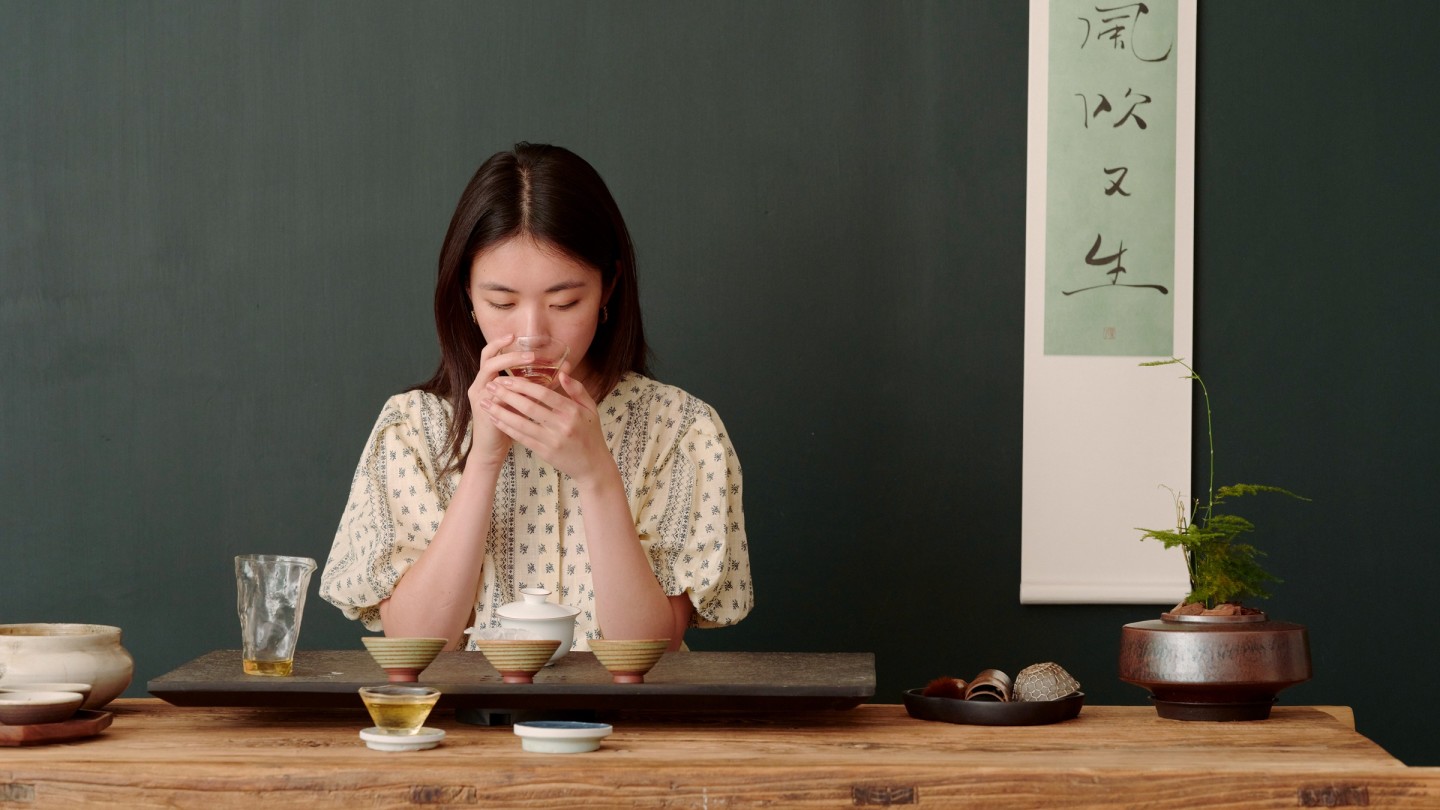
Roula Khalaf, Editor of the FT, selects her favourite stories in this weekly newsletter.
Despite having spent my childhood in Hong Kong, I grew up knowing close to nothing about Chinese tea. Sure, I enjoyed varieties such as Tie Guan Yin (Iron Buddha) and Longjing (Dragon Well) as palate-cleansers with dim sum, or stole sips from my father’s brews at home. But it always seemed too serious, ceremonial and daunting to really get into; and after studying in London, I was instead drawn to the caffeine kick of an Americano or the ease of PG Tips. It was only when visiting my parents recently – and admitting, not for the first time, that coffee put me in an anxious frenzy – I decided to learn the basics.
A number of accounts detail the origins of Chinese tea. One traces its roots back to around 3,000BC, when legend says tea leaves fell into water boiled for Emperor Shen-Nung. Juyan Webster, the London-based founder of The Chinese Tea Company, places the drink’s discovery closer to 4,000 years ago, when herbalists foraging for medicinal plants came upon Camellia sinensis and recorded its invigorating properties. Over the years, locals identified methods of harvesting, preserving and brewing tea for the best flavour. During the Tang dynasty, which spanned AD618 to 906, tea was China’s national drink; it soon made its way to Japan and Korea, and by the 1800s, tea was introduced to the Middle East via the silk road, as well as Britain and its colonies India, Sri Lanka and Kenya following the Opium Wars.
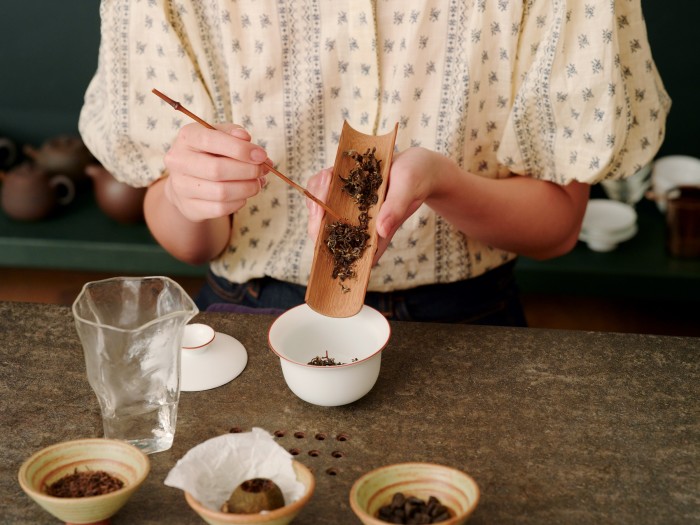
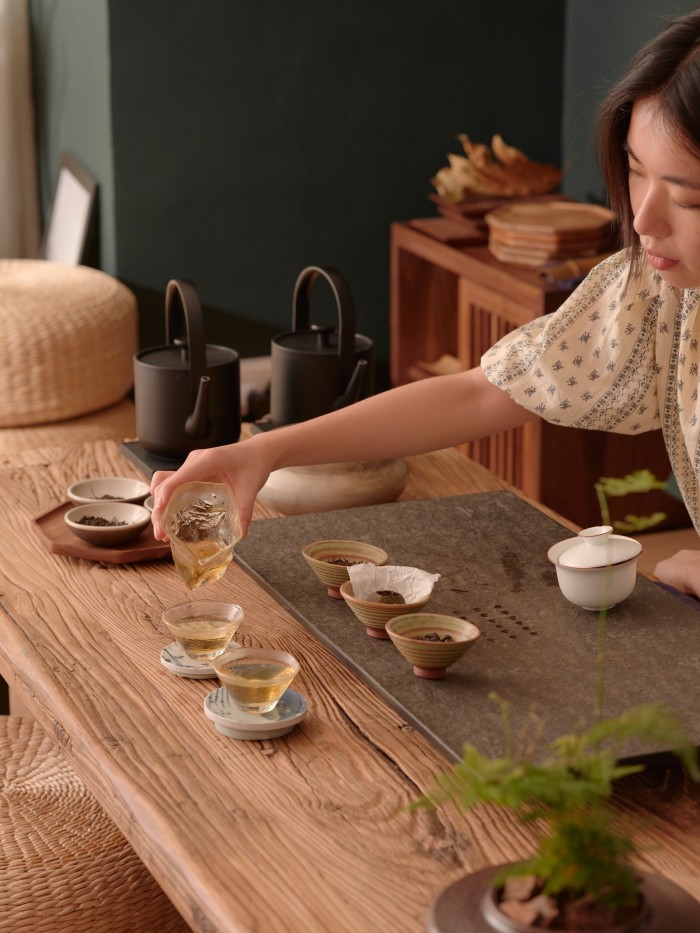
Yet today, Chinese tea remains a niche luxury abroad, partially due to the dominance of western mass market brands. Another reason is its price: in December 2021, Sotheby’s launched its first online tea auction in Hong Kong with more than 20 lots of Pu-erh, a fermented tea traditionally made in China’s Yunnan Province; an antique tea cake from 1950 went to the highest bidder for $71,600.
Even more accessibly priced Chinese teas are a luxury by global standards: at Postcard Teas – a Mayfair speciality store founded by Timothy d’Offay – Longjing, a pan-roasted green, can cost £34.95 for just 10g. The best Chinese tea-makers work on a minute scale and limited land; d’Offay likens the relationship with terroir to that of Burgundy wines. Compare this to Japanese matcha, grown across the country: terroir plays a role but doesn’t necessarily dictate cost. “The terroir of Chinese tea absolutely determines the price,” says d’Offay. “If you want Longjing, it can only come from the West Lake area, which at 700 acres is about the size of just one Darjeeling estate.”
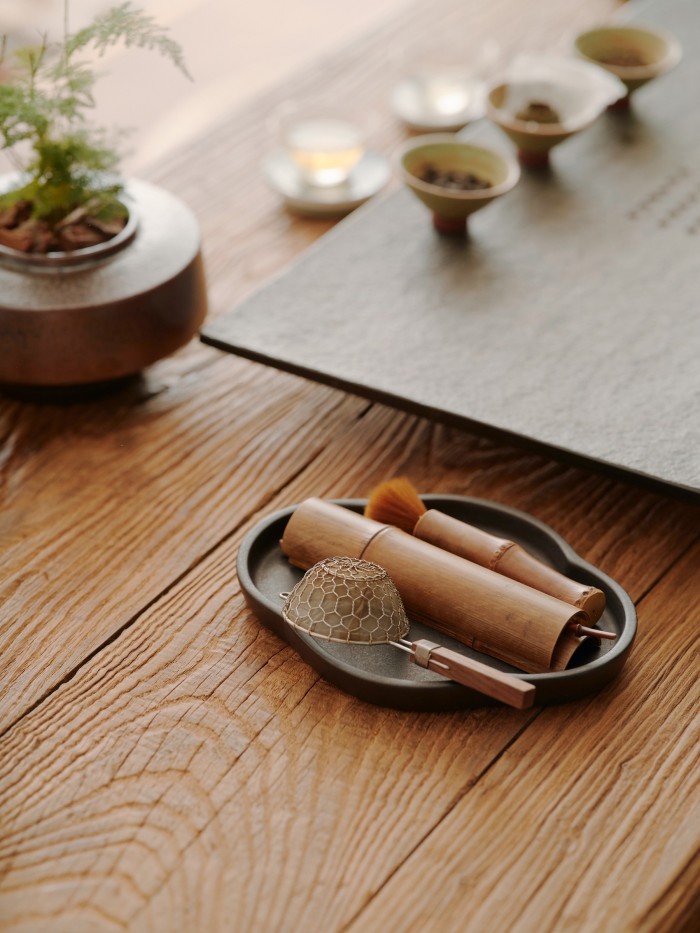
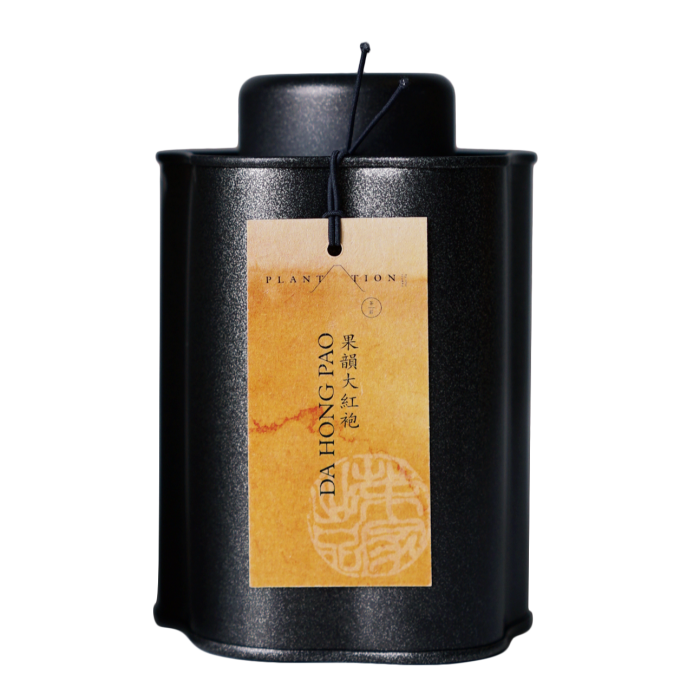
Plantation Da Hong Pao, $48.60
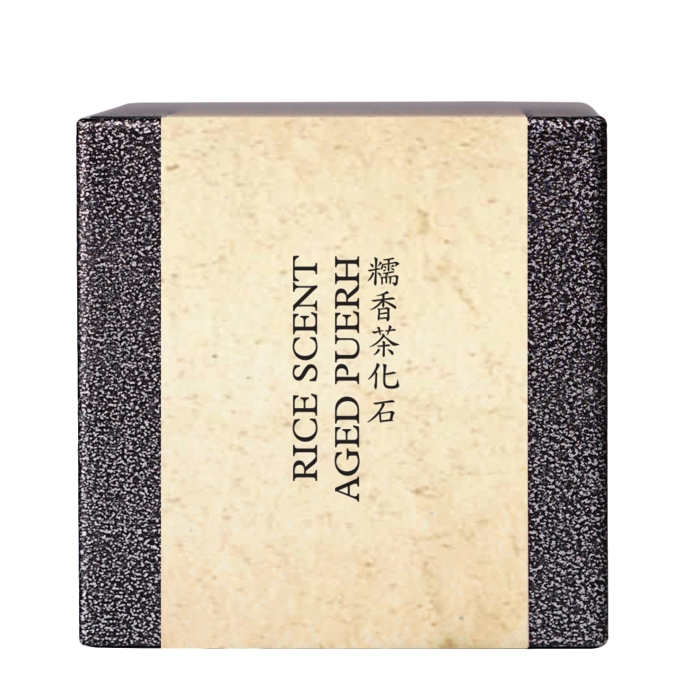
Plantation rice scent aged pu-erh, $148 for 40g
Enjoying Chinese tea – a luxury in more ways than one – prizes a slowness at odds with the breakneck pace of modern life. But that’s also its appeal, says Ip Wing-chi, the founder of Hong Kong’s LockCha Tea House. “Tea helps you rest your heart and have a pause in your life. When you’re so busy every day, sometimes you forget how to live. Tea reminds you – you have to stop for 10 minutes or so to really enjoy it.”
Indeed, with its meditative nature, subtle flavours and health benefits, it’s surprising that Chinese tea hasn’t been co-opted by Big Wellness. Besides its antioxidant and anti-inflammatory properties, Webster cites lowering high blood pressure and cholesterol as perks. While teas are generally less caffeinated than coffee, both Chinese green and black teas contain even less than Indian black teas. Moreover, the amino acid L-theanine, which is naturally present in tea and particularly potent in green and white varieties, calms anxiety and balances out its energising effects.
A tea’s flavour is mainly determined by how long the leaves have been left to oxidise, a process that naturally occurs once they’re plucked, says Nana Chan, founder of Hong Kong-based craft tea company Plantation. There are also different ways of processing them: Chinese green teas are heated immediately by pan-frying to halt oxidation; white teas are 20 to 30 per cent oxidised by methods such as sun-drying; and black tea leaves are air-dried, broken, rubbed and crushed to enhance oxidation. Oolong tea, which can be eight to 85 per cent oxidised and is processed in many ways, spans a broad spectrum of flavours, while Pu-erh teas are partially oxidised before undergoing fermentation. Across the spectrum, leaves can also be baked and steamed with flowers and shrubs, which further imbue brews with floral or fruity notes.
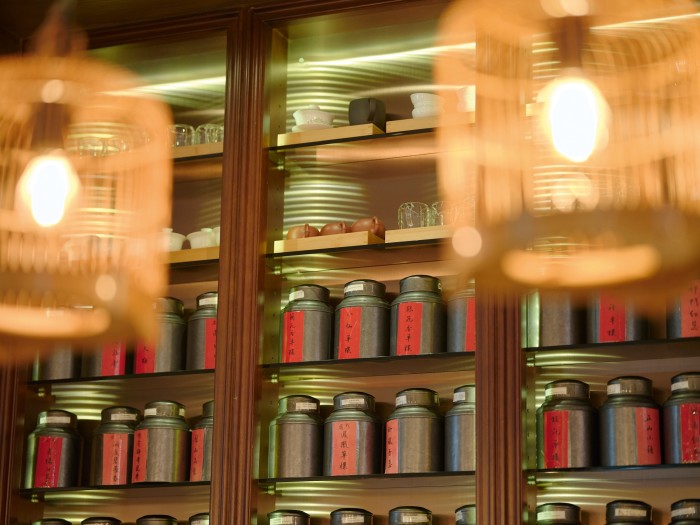
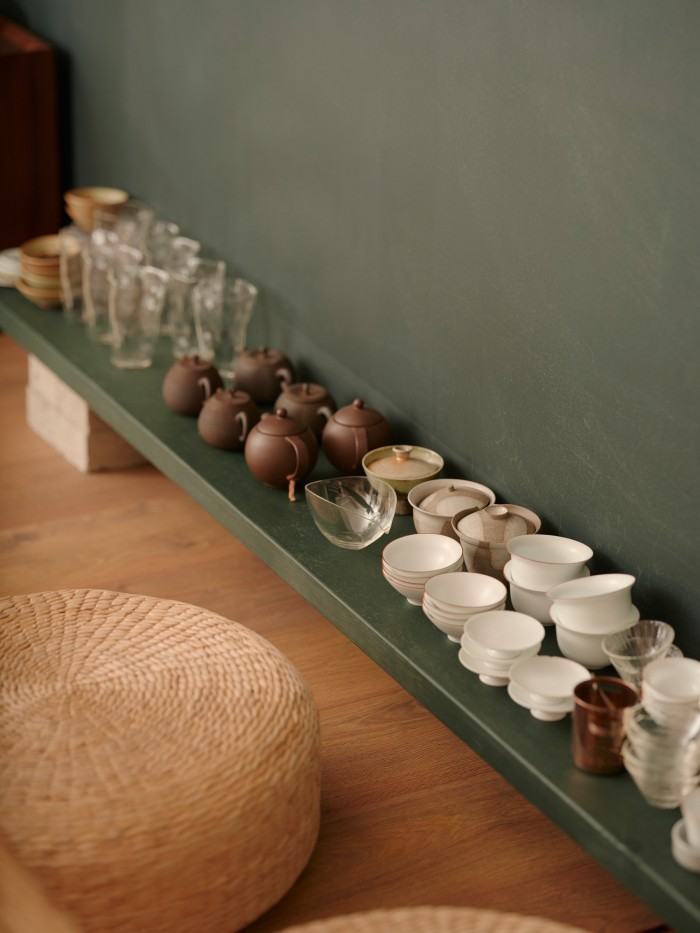
Though nothing can top an in-store sampling, hosting a tasting at home requires only a minimal set-up; connoisseurs may invest in tea sets and a gaiwan (Chinese lidded tea cup and saucer) but beginners can make do with what they own. To start, Webster suggests buying a variety of loose whole-leaf teas, and steeping 3g in a small teapot (water of 85° to 90° for green and white teas, and boiling water for black teas) for about two to three minutes, before pouring all the tea into a mug – you’ll stop the leaves from over-brewing and can brew them twice more.
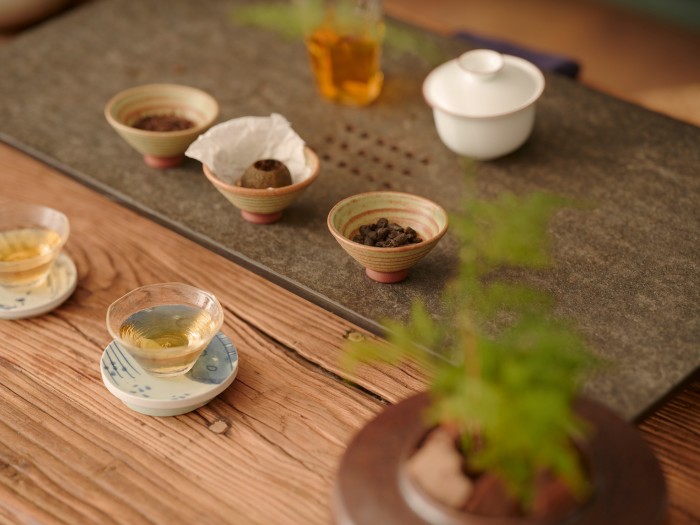
When browsing, variation is key. LockCha’s Wing-chi recommends starting with oolong teas, which vary in flavour but are packed with taste and aroma. Iron Buddha boasts approachable, refreshing and flowery notes, while Da Hong Pao (Big Red Robe), a rock tea grown in Fujian’s Wuyi mountains and favourite of Chan’s, has a minerally, smokey profile. Those after gentle, light brews should sample white teas like Silver Needle, White Peony and Yunnan Moonlight White, which Chan describes as having a mellow, sweet, syrupy texture. Fans of green tea will enjoy Keemun green, which has a subtle melon-like sweetness, says d’Offay. Finally, take on Pu-erh teas, which elude many due to their mellow, earthy notes but reward with a subtle complexity; being lower in caffeine and great for digestion, they’re especially good after a greasy meal. Chan names Rice Scent Aged Pu-erh as a crowd-pleaser with a savoury scent reminiscent of congee and pandan.
Consider me converted: Chinese tea has become a peaceful part of my everyday routine. I prefer green and oolong in the mornings and afternoons, and have come to crave sips of Pu-erh after dinner. What’s more, there’s no right way to go about exploring thousands of years’ worth of tea. “Chinese tea culture feels less accessible because people are fearful of getting it wrong,” says d’Offay. “They shouldn’t worry; making tea is the simplest form of cooking, you just have two ingredients and time. Spend less money on teaware, and buy better tea.”
Comments